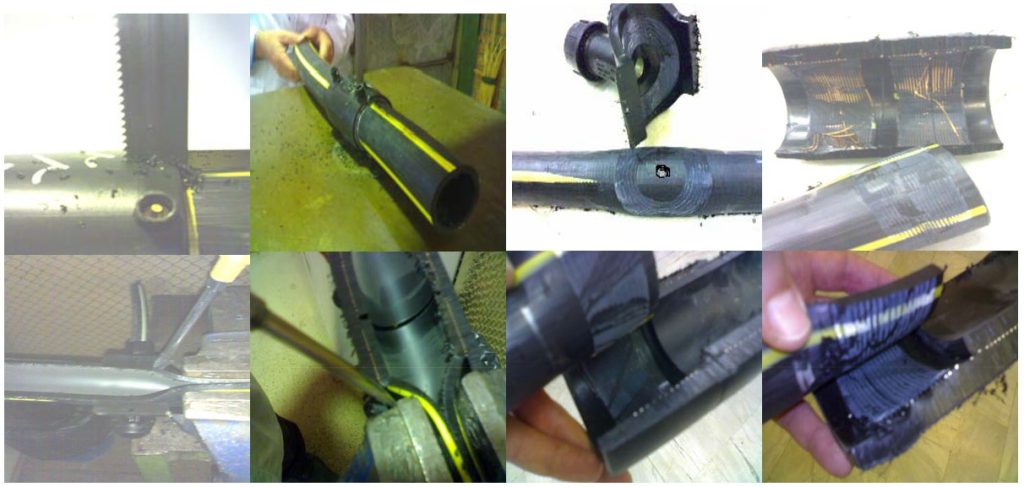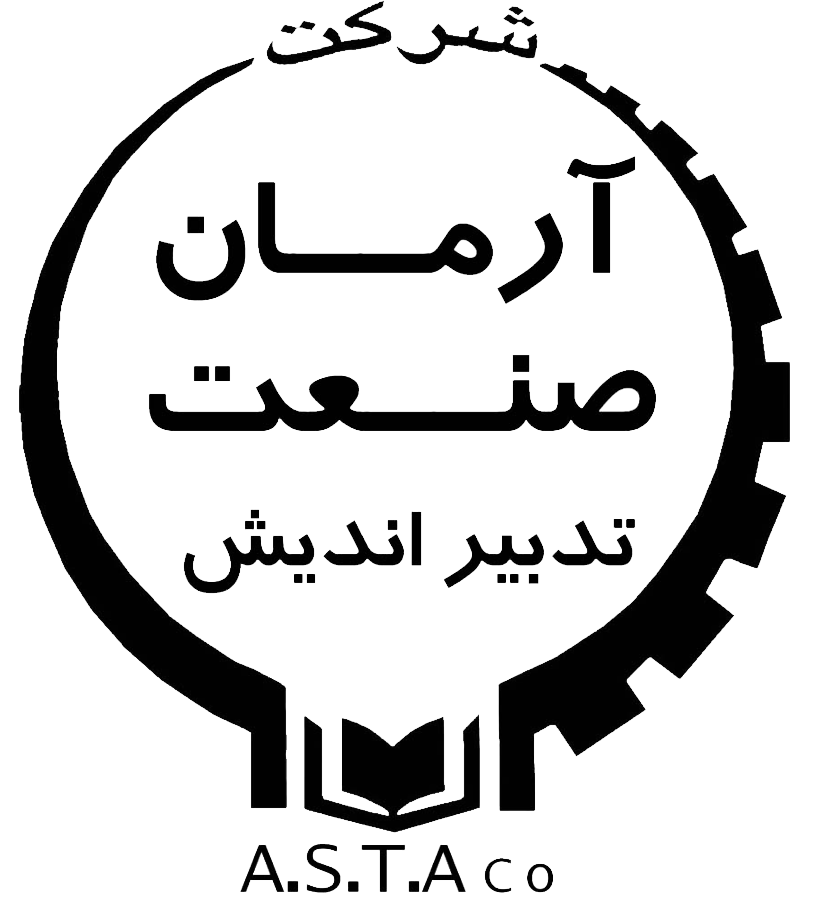Materials and Metallurgy Laboratory

The Arman Sanat Tadbir Andish laboratory complex consists of several departments, generally categorized into Concrete and Building Materials Laboratory, Soil Mechanics and Geotechnics Laboratory, Rock Mechanics Laboratory, Materials and Metallurgy Laboratory, Asphalt Laboratory, and more. In this section, we will introduce the Materials and Metallurgy Laboratory.
The nature of tests performed in the Materials and Metallurgy Laboratory at Arman Sanat Tadbir Andish includes:
- Chemical and Physical
- Physical
- Mechanical
Quantometry Analysis Test – Optical Emission Spectrometry (OES)
If the electrons of an atom are excited, some of them absorb energy from this excitation and move from their original orbit to a higher energy level. Due to instability and the tendency to return to their original orbit, the electrons release the absorbed energy in the form of light. The wavelength of this emitted light corresponds to the type of the excited element.

Excitation Source (here, the spark): The spark is an alternating current electric discharge that occurs as a series of small, continuous explosions during operation. Energy accumulates in capacitors, charging them, and after activation, the capacitors discharge. In spark excitation, an electric discharge occurs between the electrode and the sample. The electrode is made of tungsten. Due to this spark, the sample material vaporizes, and the atoms' electrons become excited at high temperatures.
Optical System: Lenses and a grating with 3600 lines per millimeter
Detection System: Detectors used are CCD (Charge-Coupled Device) and PMT (Photomultiplier Tube).
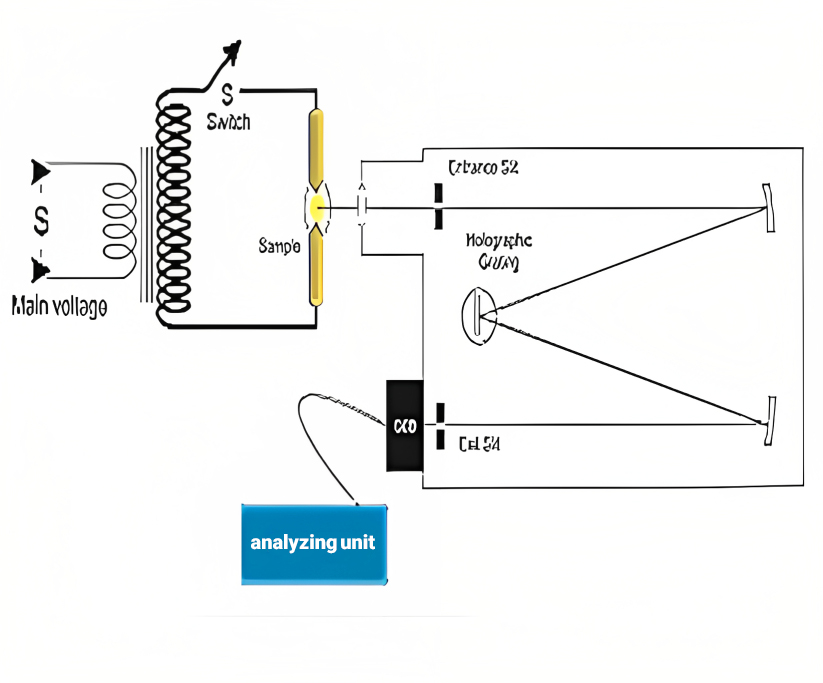






Standards Related to Quantometry
– ASTM E415 (Fe), E1251 (Al), E1086 (Stainless Steel), E1999 (Cast Iron), E2209 (High Manganese Steel)
– DIN EN 15079 (Cu)
– ISIRI 10979 (Fe)

Tension testing
The tensile test involves subjecting a test specimen to tensile strain that is continuously increased until failure occurs. This test is conducted to determine one or more tensile properties, including tensile strength (Rm), upper and lower yield strengths, conventional and permanent strengths (Rp0.2, Rt0.5, ReL, ReH), elongation (ε), reduction of area, and Young’s modulus (E).
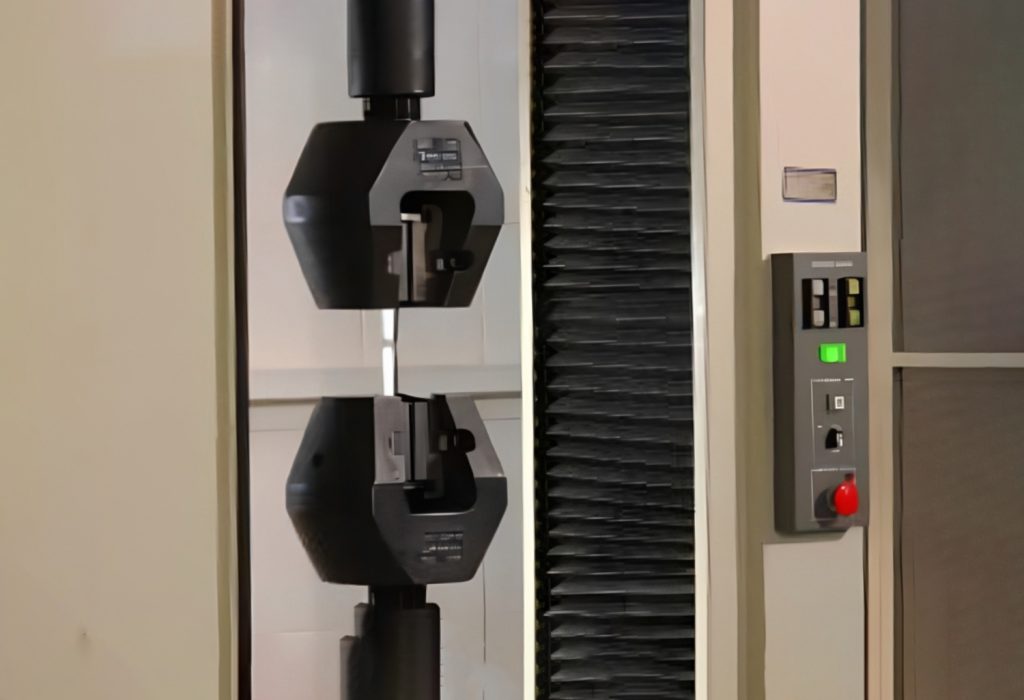
Bending test
The bending test is a ductility test used to measure the ability of metal materials to withstand plastic deformation caused by the bending process. This test involves plastically deforming a test specimen with a circular, square, rectangular, or polygonal cross-section by bending it without changing the loading direction until a specified bending angle is reached.
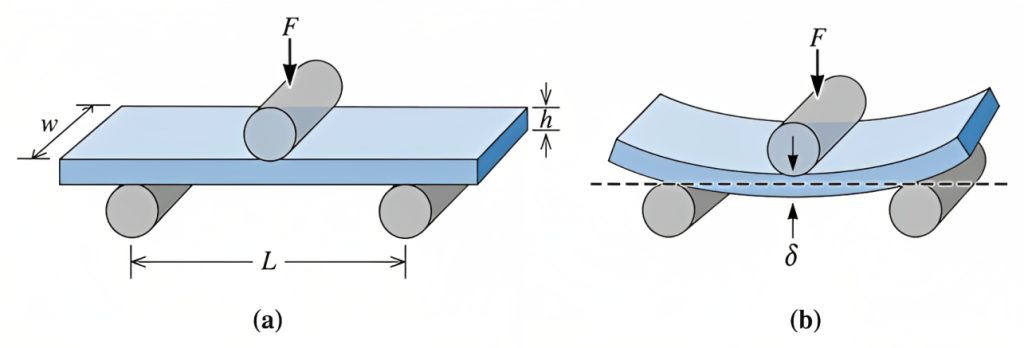


Relevant standards:
ISIRI 1016
ISO 7438
ASTM E290
A370
AWS B4
ASME Sec.IX
API 1104
Impact Test
The Charpy impact test is a dynamic test in which a V-shaped or U-shaped notched specimen is broken by a freely swinging pendulum. At the end, the absorbed energy is measured. This energy represents the material’s impact strength.
In this test, a notched specimen is broken by a pendulum impact. The notch of the specimen has a specific geometric shape and is located at the center between two supports, directly opposite the point where the impact is applied. The energy absorbed during the test is then measured.


Relevant standards:
ISIRI 796-1
ISO 796-1
ASTM E23
A370
Hardness Testing
To perform this test, the specimen must have a parallel and smooth surface to enable accurate measurement of the indentation diameter.
The contact surface must be completely free of foreign substances such as rust, oil, debris, and the like, and must be clean. It is essential that the specimen is placed rigidly and securely on the lower plate, ensuring no movement or displacement occurs during the test.
The specimen preparation must be carried out in a way that minimizes any alteration to the surface; for example, the surface should not undergo hot working or cold working.

Brinell Hardness Testing
The Brinell hardness test is an indentation test in which a hard metal ball is pressed into the surface of the test specimen under a specified load. After removing the load, the average diameter of the indentation left on the surface is measured. The Brinell hardness is calculated by dividing the applied test force by the curved surface area of the indentation.

Relevant standards:
ISIRI 7809
ISO 6506-1
ASTM E10
Rockwell Hardness Test
The Rockwell and Superficial Rockwell hardness tests are indentation tests that involve pressing an indenter into the surface of a test specimen in two stages. First, a preliminary test force is applied, followed by an additional load. The depth of the permanent indentation under the preliminary load is measured after removing the additional force. The Rockwell hardness value is determined based on this fixed indentation depth.
Relevant standards:
ISIRI 7811-1
ISO 6508-1
ASTM E18
Vickers Hardness Testing
The Vickers hardness test is an indentation test in which a diamond-shaped pyramid with a square base and an angle of 136 degrees between opposite faces at the apex is pressed into the surface of a test specimen under a specified load. After removing the test force, the lengths of the diagonals of the indentation left on the surface are measured. The Vickers hardness is calculated by dividing the applied test force by the sloped surface area of the indentation.
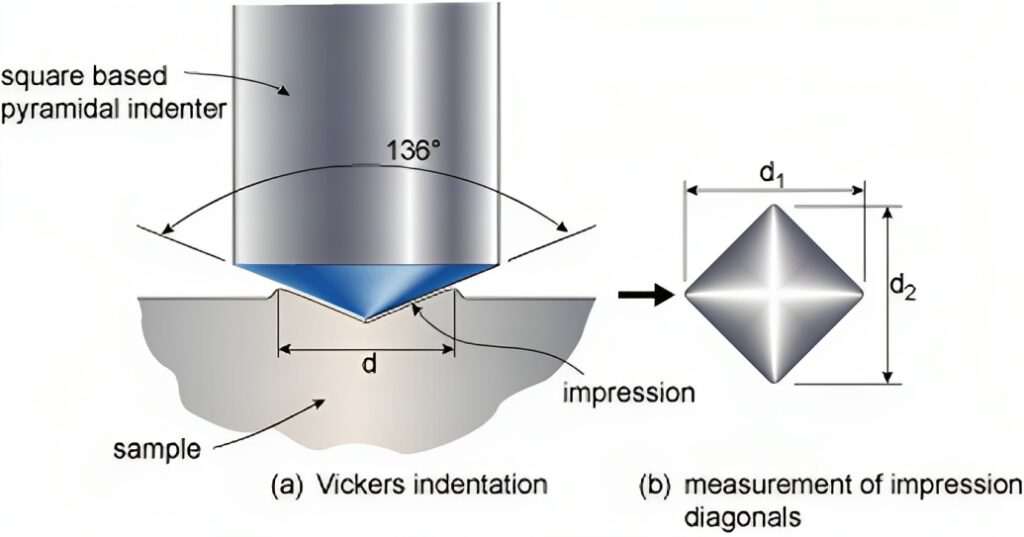
Relevant standards:
ISIRI 7810
ISO 6507-1
ASTM E92
ASTM E140
Microscopic method test for determining the grain size of steels
(Micrographic determination of the apparent grain size's)
The microscopic method for determining the ferrite or austenite grain size in steels involves examining a properly prepared polished surface of a specimen to reveal the grain boundaries. The grain size is then measured either comparatively or quantitatively.

Test for determining the quality of polyethylene pipe welding
(Micrographic determination of the apparent grain size's)
The crush test is performed in the field under the supervision of the project’s supervising engineer or their representative on electrofusion fittings sampled from each project. This test, as part of destructive testing, is mandatory to determine the quality of the welds.
The purpose of this test is to determine the quality of the welds in polyethylene pipes of the socket electrofusion type. This test can be performed on pipe diameters ranging from 16 mm to 225 mm. The weld strength criteria are based on the dimensional characteristics of cracks formed in the weld and the type of fracture surfaces.
